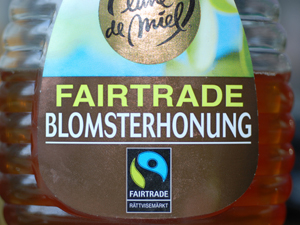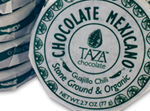10 Must-Answer Questions When Mulling Third-Party Certification

My colleague Natalie Reitman-White shared a valuable comment afterreading my recent articleon choosing third-party labels. She stressed the importance of a point referenced only briefly there -- determining whether to pursue certification or implement independent initiatives, which may bring greater benefits for people, planet and business.
She is certainly well versed in this arena as the sustainability manager atOrganically Grown Company, which is engaged inCertified Organic,Fair Trade Certified,国内公平贸易认证andOrganics Unlimited's GROW Bananas.
In some cases, certification is clearly preferable. In other cases, well-designed in-house initiatives, such as purchasing guidelines, supplier engagement and producer capacity building may yield equal or better returns for all involved. External agencies and consultants can help fill internal gaps to ensure high-integrity programs. Transparent communications can give efforts credibility. Many companies combine both approaches across broader needs.
External agencies and consultants can help fill internal gaps to ensure high-integrity programs. Transparent communications can give efforts credibility. Many companies combine both approaches across broader needs.
It's important to understand your requirements, impacts and capacities and compare outcomes of each path.
Here are 10 questions to help you focus:
1. What are your needs and options?List the practices and attributes you want to verify and communicate, what's required to do this, why you feel external programs might be necessary and what your alternatives are. This will narrow down potential options to refine as you continue your inquiry.
2. Is relevant terminology regulated?Some terms can be used only if certification is obtained, such as organic on food products (with the exception of operations below a defined revenue). If it's essential to communicate a specific attribute, look into the legalities. The launch of the updatedFTC Green Guides, backed by increased policing of claims, makeslegal savvyparticularly critical.
3. What will yield the most significant positive difference?The requirements underlying your efforts alike should be measurably better than the status quo and legal requirements, or they're effectively greenwash and won't differentiate your brand. Third-party standards can create accountability and a high bar that pushes you farther than you might go otherwise. Some companies see a need to go beyond existing frameworks and develop their own criteria.
4. What's most appropriate for suppliers?Producers will face significant demands, particularly small-scale farmers and others father down in the supply chain. It's essential that requirements are culturally appropriate and shaped by producer input, and that costs are reasonable. Some third-party standards exclude certain suppliers for reasons that aren't central to the issue at hand, such as size, location or business structure. Ensure your chosen route doesn't fare poorly in these areas.
5. What's most cost-effective?Verification can often be done efficiently with direct business activities and first-tier vendors. Things become more resource-intensive when dealing with stratified, globalized supply chains, aspects that are farther removed in influence and geography, and multiple entities. Certifiers are well equipped for this but you can also combine in-house standards with external auditing, such asStarbucks C.A.F.E. Practices.
6. Do you have the right knowledge?Creating appropriate guidelines, conducting a valid assessment and addressing identified shortcomings all require expertise with industrial processes, technology, science, agriculture, economics, cross-cultural diversity, relevant international frameworks, applicable laws and the like. Labeling agencies should be well equipped. For internal programs, a diversified staff team or consultants can fit the bill.
7. Are you willing to share data if you go it alone?Unverified claims have little value in the market. Many companies are hesitant to disclose details around processes, formulations, sources and the like, preferring third-party agencies that safeguard proprietary information and vouch for its integrity. Yet, leading-edge transparency abounds, such asTAZA Chocolate, which shares production specs by lot code,Nike,publicizes manufacturing locations andPatagonia's Footprint Chronicles, which maps the lifecycle for select products.
8. Do stakeholders require specific certifications?Labels can be deal breakers with some buyers. For energy-using products, B2B customers are increasingly likely to require Energy Star or similar standards, and government-sponsored energy incentives are driving consumers in the same direction. Whole Foods recently announced that all body care products with organic claimsmust obtain USDA Organic Certificationby 2011.
9. Does labeling measurably improve reputation and revenue?认证,部分支持品牌营销。It can be a powerful tiebreaker with customers -- provided that quality and perceived value are high, temper critics and turn influential stakeholders into advocates. Dialogue and surveys can help weigh the relative impact of external versus internal initiatives in these areas.
10. What delivers the greatest return on investment?Third-party standards can involve audits, licensing fees and investments in improvements to comply. In-house initiatives bring implementation and monitoring costs. It's critical to evaluate and compare overall ROI and the allocation of funds across activities such as overhead, marketing, auditing and on-the-ground improvements.
Additional suggestions, insights and questions are always encouraged in the comments section. Whatever your path, may it raise the bar and drive the real change that's needed for business, people and the environment.
Melissa Schweisguth is afreelancerfocused on socially responsible and sustainable business consulting, writing and media relations. She is director of membership development and education for theFood Trade Sustainability Leadership Association.
Images CC licensed byLet Ideas Compete,Ian Muttoo,Jeff KubinaandKafka4prez; image of candy courtesy of Taza Chocolate.
 3. What will yield the most significant positive difference?The requirements underlying your efforts alike should be measurably better than the status quo and legal requirements, or they're effectively greenwash and won't differentiate your brand. Third-party standards can create accountability and a high bar that pushes you farther than you might go otherwise. Some companies see a need to go beyond existing frameworks and develop their own criteria.
3. What will yield the most significant positive difference?The requirements underlying your efforts alike should be measurably better than the status quo and legal requirements, or they're effectively greenwash and won't differentiate your brand. Third-party standards can create accountability and a high bar that pushes you farther than you might go otherwise. Some companies see a need to go beyond existing frameworks and develop their own criteria. 5. What's most cost-effective?Verification can often be done efficiently with direct business activities and first-tier vendors. Things become more resource-intensive when dealing with stratified, globalized supply chains, aspects that are farther removed in influence and geography, and multiple entities. Certifiers are well equipped for this but you can also combine in-house standards with external auditing, such as
5. What's most cost-effective?Verification can often be done efficiently with direct business activities and first-tier vendors. Things become more resource-intensive when dealing with stratified, globalized supply chains, aspects that are farther removed in influence and geography, and multiple entities. Certifiers are well equipped for this but you can also combine in-house standards with external auditing, such as





